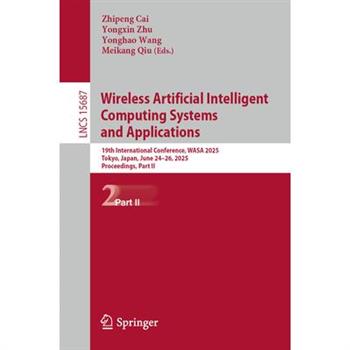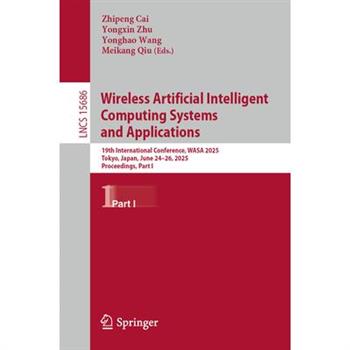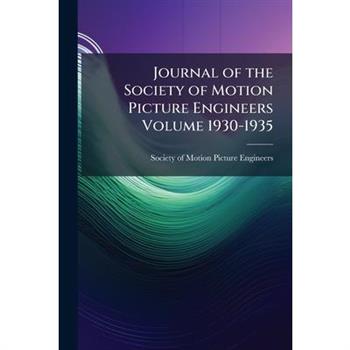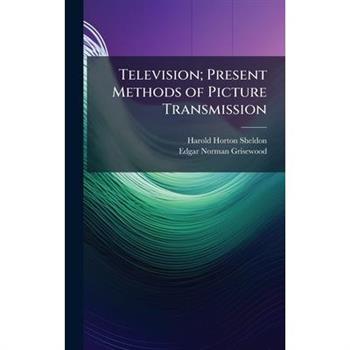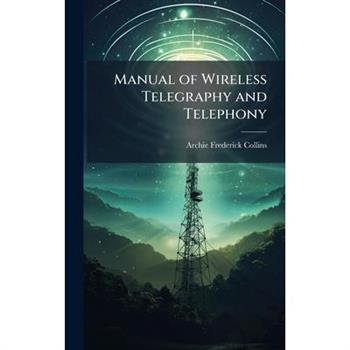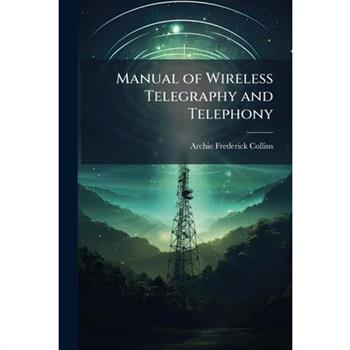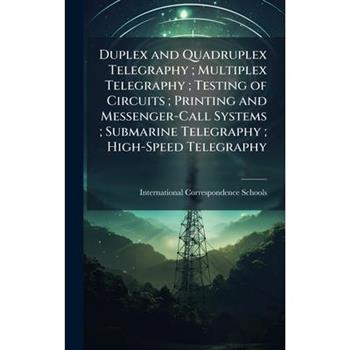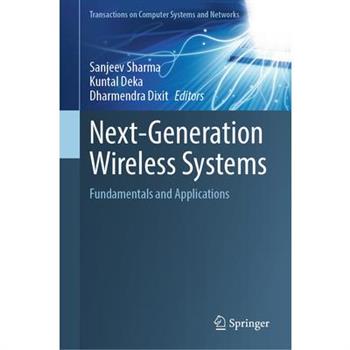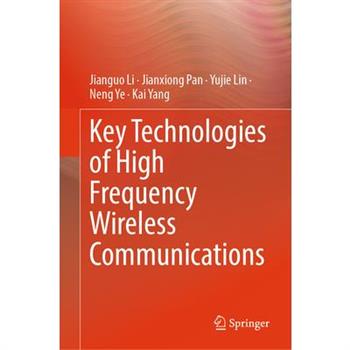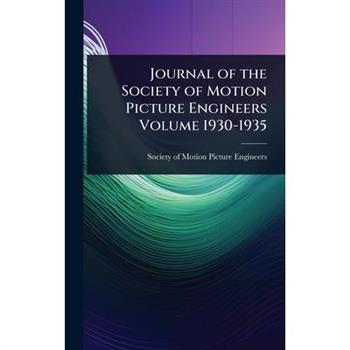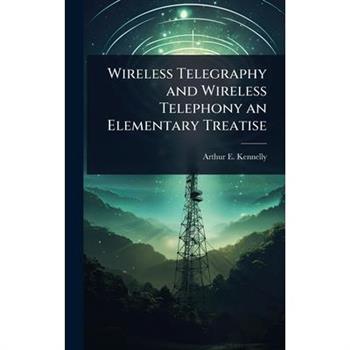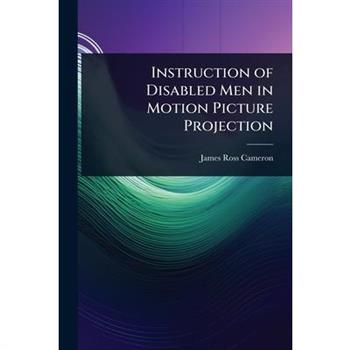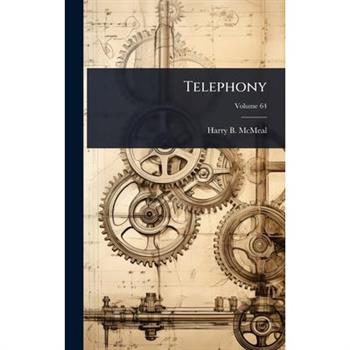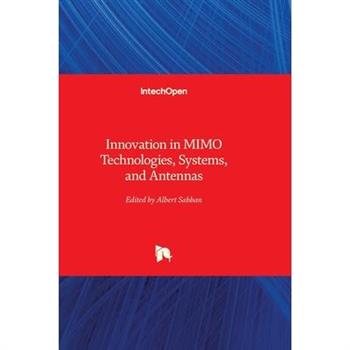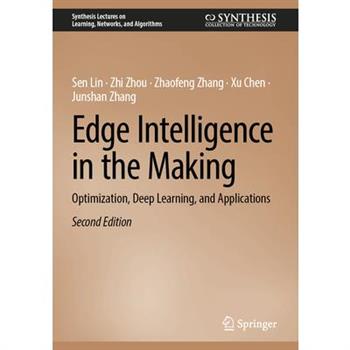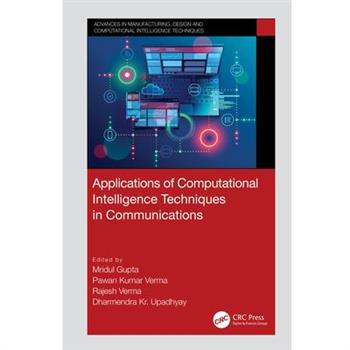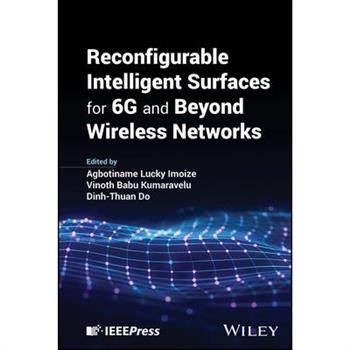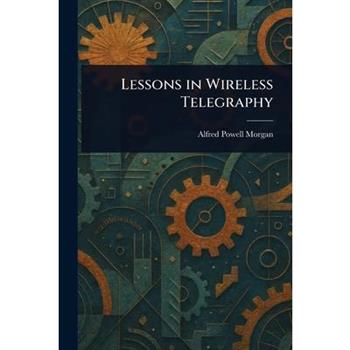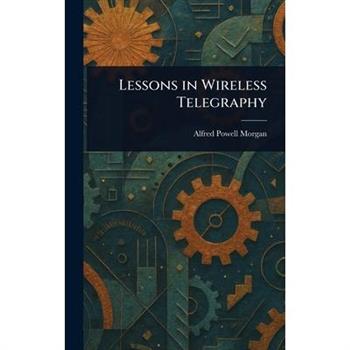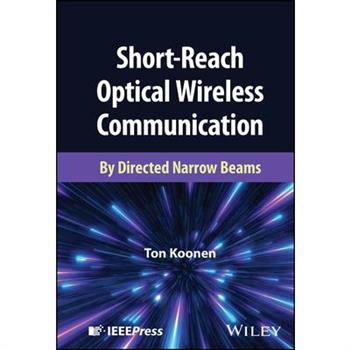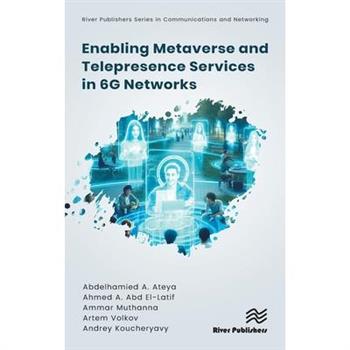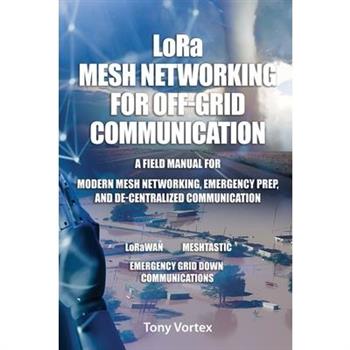Wireless Artificial Intelligent Computing Systems and Applications
The 3-volume set LNCS 15686 - 15688 constitutes the proceedings of the 19th International Conference on Wireless Artificial Intelligent Computing Systems and Applications, WASA 2025, which took place in Tokyo, Japan, during June 24-26, 2025. The 70 full papers and 34 short papers included in the proceedings were carefully reviewed and selected from 282 submissions. The proceedings also contain 10 papers from the AICom2 symposium. WASA is a prestigious annual gathering that serves as a global platform for researchers, academics, and industry professionals to explore and exchange cuttingedge ideas, research findings, and innovative solutions at the dynamic intersection of wireless technologies and artificial intelligence (AI) computing systems.
Wireless Artificial Intelligent Computing Systems and Applications
The 3-volume set LNCS 15686 - 15688 constitutes the proceedings of the 19th International Conference on Wireless Artificial Intelligent Computing Systems and Applications, WASA 2025, which took place in Tokyo, Japan, during June 24-26, 2025. The 70 full papers and 34 short papers included in the proceedings were carefully reviewed and selected from 282 submissions. The proceedings also contain 10 papers from the AICom2 symposium. WASA is a prestigious annual gathering that serves as a global platform for researchers, academics, and industry professionals to explore and exchange cuttingedge ideas, research findings, and innovative solutions at the dynamic intersection of wireless technologies and artificial intelligence (AI) computing systems.
Journal of the Society of Motion Picture Engineers Volume 1930-1935
This comprehensive volume, "Journal of the Society of Motion Picture Engineers Volume 1930-1935," offers a detailed look into the early years of motion picture technology. Compiled by the Society of Motion Picture Engineers, the journal provides invaluable insights into the engineering advancements and technical discussions that shaped the film industry during a crucial period of its development. Covering the years 1930 to 1935, the journal includes articles, reports, and discussions on various aspects of filmmaking, from camera technology and sound recording to projection techniques and film preservation. It serves as a primary source for historians, engineers, and film enthusiasts interested in understanding the evolution of cinema technology and the challenges faced by early pioneers in the field. This collection captures the spirit of innovation and collaboration that characterized the Society's mission to advance the science and art of motion pictures.This work has been selected by scholars as being culturally important, and is part of the knowledge base of civilization as we know it. This work was reproduced from the original artifact, and remains as true to the original work as possible. Therefore, you will see the original copyright references, library stamps (as most of these works have been housed in our most important libraries around the world), and other notations in the work.This work is in the public domain in the United States of America, and possibly other nations. Within the United States, you may freely copy and distribute this work, as no entity (individual or corporate) has a copyright on the body of the work.As a reproduction of a historical artifact, this work may contain missing or blurred pages, poor pictures, errant marks, etc. Scholars believe, and we concur, that this work is important enough to be preserved, reproduced, and made generally available to the public. We appreciate your support of the preservation process, and thank you for being an important part of keeping this knowledge alive and relevant.
Television; Present Methods of Picture Transmission
Television; Present Methods of Picture Transmission, originally published in 1929, offers a fascinating glimpse into the nascent field of television technology. Authored by Harold Horton Sheldon and Edgar Norman Grisewood, this book meticulously details the methods of image transmission prevalent at the time. Exploring the technical intricacies of early television systems, the authors provide insights into the engineering challenges and innovative solutions that defined this pivotal era. This historical account is invaluable for anyone interested in the evolution of communication technology, showcasing the ingenuity and groundwork that paved the way for modern television. It serves as a crucial reference for understanding the historical context and technical foundations of one of the most transformative inventions of the 20th century.This work has been selected by scholars as being culturally important, and is part of the knowledge base of civilization as we know it. This work was reproduced from the original artifact, and remains as true to the original work as possible. Therefore, you will see the original copyright references, library stamps (as most of these works have been housed in our most important libraries around the world), and other notations in the work.This work is in the public domain in the United States of America, and possibly other nations. Within the United States, you may freely copy and distribute this work, as no entity (individual or corporate) has a copyright on the body of the work.As a reproduction of a historical artifact, this work may contain missing or blurred pages, poor pictures, errant marks, etc. Scholars believe, and we concur, that this work is important enough to be preserved, reproduced, and made generally available to the public. We appreciate your support of the preservation process, and thank you for being an important part of keeping this knowledge alive and relevant.
Television; Present Methods of Picture Transmission
Television; Present Methods of Picture Transmission, originally published in 1929, offers a fascinating glimpse into the nascent field of television technology. Authored by Harold Horton Sheldon and Edgar Norman Grisewood, this book meticulously details the methods of image transmission prevalent at the time. Exploring the technical intricacies of early television systems, the authors provide insights into the engineering challenges and innovative solutions that defined this pivotal era. This historical account is invaluable for anyone interested in the evolution of communication technology, showcasing the ingenuity and groundwork that paved the way for modern television. It serves as a crucial reference for understanding the historical context and technical foundations of one of the most transformative inventions of the 20th century.This work has been selected by scholars as being culturally important, and is part of the knowledge base of civilization as we know it. This work was reproduced from the original artifact, and remains as true to the original work as possible. Therefore, you will see the original copyright references, library stamps (as most of these works have been housed in our most important libraries around the world), and other notations in the work.This work is in the public domain in the United States of America, and possibly other nations. Within the United States, you may freely copy and distribute this work, as no entity (individual or corporate) has a copyright on the body of the work.As a reproduction of a historical artifact, this work may contain missing or blurred pages, poor pictures, errant marks, etc. Scholars believe, and we concur, that this work is important enough to be preserved, reproduced, and made generally available to the public. We appreciate your support of the preservation process, and thank you for being an important part of keeping this knowledge alive and relevant.
Duplex and Quadruplex Telegraphy; Multiplex Telegraphy; Testing of Circuits; Printing and Messenger-Call Systems; Submarine Telegraphy; High-Speed Telegraphy
A comprehensive early 20th-century exploration of telegraphic systems, "Duplex and Quadruplex Telegraphy," delves into the intricacies of then-modern telecommunications. This detailed volume, likely used for training, covers a range of topics, including the principles and practical applications of duplex and quadruplex telegraphy, which significantly increased the capacity of telegraph lines. The book also examines multiplex telegraphy, enabling the simultaneous transmission of multiple signals. Essential techniques for testing and maintaining telegraph circuits are thoroughly explained, ensuring reliable operation. Furthermore, it provides insights into printing and messenger-call systems, as well as the challenges and solutions involved in submarine telegraphy, which connected continents via underwater cables. The text also touches upon high-speed telegraphy, reflecting the ongoing quest for faster and more efficient communication methods. This work has been selected by scholars as being culturally important, and is part of the knowledge base of civilization as we know it. This work was reproduced from the original artifact, and remains as true to the original work as possible. Therefore, you will see the original copyright references, library stamps (as most of these works have been housed in our most important libraries around the world), and other notations in the work.This work is in the public domain in the United States of America, and possibly other nations. Within the United States, you may freely copy and distribute this work, as no entity (individual or corporate) has a copyright on the body of the work.As a reproduction of a historical artifact, this work may contain missing or blurred pages, poor pictures, errant marks, etc. Scholars believe, and we concur, that this work is important enough to be preserved, reproduced, and made generally available to the public. We appreciate your support of the preservation process, and thank you for being an important part of keeping this knowledge alive and relevant.
Manual of Wireless Telegraphy and Telephony
Dive into the foundational era of radio communication with Archie Frederick Collins's "Manual of Wireless Telegraphy and Telephony." Originally published in 1913, this comprehensive guide offers a detailed exploration of the principles and practices of early wireless technology. Collins, a pioneer in the field, meticulously covers the equipment, techniques, and theoretical underpinnings of both wireless telegraphy and telephony. This book provides invaluable insights into the workings of early radio systems, making it an essential resource for historians, engineers, and anyone fascinated by the origins of modern telecommunications. Discover the ingenuity and innovation that laid the groundwork for today's wireless world through this meticulously detailed manual.This work has been selected by scholars as being culturally important, and is part of the knowledge base of civilization as we know it. This work was reproduced from the original artifact, and remains as true to the original work as possible. Therefore, you will see the original copyright references, library stamps (as most of these works have been housed in our most important libraries around the world), and other notations in the work.This work is in the public domain in the United States of America, and possibly other nations. Within the United States, you may freely copy and distribute this work, as no entity (individual or corporate) has a copyright on the body of the work.As a reproduction of a historical artifact, this work may contain missing or blurred pages, poor pictures, errant marks, etc. Scholars believe, and we concur, that this work is important enough to be preserved, reproduced, and made generally available to the public. We appreciate your support of the preservation process, and thank you for being an important part of keeping this knowledge alive and relevant.
Manual of Wireless Telegraphy and Telephony
Dive into the foundational era of radio communication with Archie Frederick Collins's "Manual of Wireless Telegraphy and Telephony." Originally published in 1913, this comprehensive guide offers a detailed exploration of the principles and practices of early wireless technology. Collins, a pioneer in the field, meticulously covers the equipment, techniques, and theoretical underpinnings of both wireless telegraphy and telephony. This book provides invaluable insights into the workings of early radio systems, making it an essential resource for historians, engineers, and anyone fascinated by the origins of modern telecommunications. Discover the ingenuity and innovation that laid the groundwork for today's wireless world through this meticulously detailed manual.This work has been selected by scholars as being culturally important, and is part of the knowledge base of civilization as we know it. This work was reproduced from the original artifact, and remains as true to the original work as possible. Therefore, you will see the original copyright references, library stamps (as most of these works have been housed in our most important libraries around the world), and other notations in the work.This work is in the public domain in the United States of America, and possibly other nations. Within the United States, you may freely copy and distribute this work, as no entity (individual or corporate) has a copyright on the body of the work.As a reproduction of a historical artifact, this work may contain missing or blurred pages, poor pictures, errant marks, etc. Scholars believe, and we concur, that this work is important enough to be preserved, reproduced, and made generally available to the public. We appreciate your support of the preservation process, and thank you for being an important part of keeping this knowledge alive and relevant.
Duplex and Quadruplex Telegraphy; Multiplex Telegraphy; Testing of Circuits; Printing and Messenger-Call Systems; Submarine Telegraphy; High-Speed Telegraphy
A comprehensive early 20th-century exploration of telegraphic systems, "Duplex and Quadruplex Telegraphy," delves into the intricacies of then-modern telecommunications. This detailed volume, likely used for training, covers a range of topics, including the principles and practical applications of duplex and quadruplex telegraphy, which significantly increased the capacity of telegraph lines. The book also examines multiplex telegraphy, enabling the simultaneous transmission of multiple signals. Essential techniques for testing and maintaining telegraph circuits are thoroughly explained, ensuring reliable operation. Furthermore, it provides insights into printing and messenger-call systems, as well as the challenges and solutions involved in submarine telegraphy, which connected continents via underwater cables. The text also touches upon high-speed telegraphy, reflecting the ongoing quest for faster and more efficient communication methods. This work has been selected by scholars as being culturally important, and is part of the knowledge base of civilization as we know it. This work was reproduced from the original artifact, and remains as true to the original work as possible. Therefore, you will see the original copyright references, library stamps (as most of these works have been housed in our most important libraries around the world), and other notations in the work.This work is in the public domain in the United States of America, and possibly other nations. Within the United States, you may freely copy and distribute this work, as no entity (individual or corporate) has a copyright on the body of the work.As a reproduction of a historical artifact, this work may contain missing or blurred pages, poor pictures, errant marks, etc. Scholars believe, and we concur, that this work is important enough to be preserved, reproduced, and made generally available to the public. We appreciate your support of the preservation process, and thank you for being an important part of keeping this knowledge alive and relevant.
5g/5g-Advanced Networks
5G/5G Advanced Networks: Planning, Design and Optimization, 2nd edition, presents practical methods and algorithms for the design of 5G/5G Advanced Networks, covering topics that range from network resilience to how streaming data analytics can be used in network orchestration and slice optimization. The book addresses 5G optimization issues that are data driven, high dimensional and clustered The new edition is extensively revised and updated with 5 new chapters: - Information theory applied to design targets and performance limits - 5G+radio interface and radio planning - Heavy traffic analysis - Network slicing - Machine learning methods for offline analytics This new edition now gives a broad and complete foundation in network optimization techniques for all subsystems of the cellular network by: - Showing how to optimize networks end-to-end, including dependencies between subsystems - Presenting network tuning methods to improve capacity, service quality, energy efficiency, and resilience - in relation to cost - Presenting designs of network slices with multi-objective performance targets The new edition also includes new practical hints sections that show algorithm implementation (end-to-end and unit testing), solution validation, bench-marking, potential pitfalls, the use of open-source software, illustration of code objects with examples in Python. 5G/5G Advanced Networks: Planning, Design and Optimization, 2nd edition, is an invaluable resource for telecom operators and service providers, university researchers, graduate students and network planners interested in practical methods for optimizing networks for large performance improvements and cost savings.
Elementary Telegraphy And Telephony
"Elementary Telegraphy and Telephony" provides a foundational understanding of the principles and practical applications of early communication technologies. Authored by Arthur Crotch, this book delves into the workings of telegraph and telephone systems, offering insights into the electrical and mechanical components that enabled long-distance communication.Suitable for students and enthusiasts alike, this volume explores the history and technological underpinnings of these groundbreaking inventions. Discover the methods used to transmit messages and voices across wires, and gain an appreciation for the ingenuity of the pioneers who shaped modern telecommunications.This work has been selected by scholars as being culturally important, and is part of the knowledge base of civilization as we know it. This work was reproduced from the original artifact, and remains as true to the original work as possible. Therefore, you will see the original copyright references, library stamps (as most of these works have been housed in our most important libraries around the world), and other notations in the work.This work is in the public domain in the United States of America, and possibly other nations. Within the United States, you may freely copy and distribute this work, as no entity (individual or corporate) has a copyright on the body of the work.As a reproduction of a historical artifact, this work may contain missing or blurred pages, poor pictures, errant marks, etc. Scholars believe, and we concur, that this work is important enough to be preserved, reproduced, and made generally available to the public. We appreciate your support of the preservation process, and thank you for being an important part of keeping this knowledge alive and relevant.
Key Technologies of High Frequency Wireless Communications
Journal of the Society of Motion Picture Engineers Volume 1930-1935
This comprehensive volume, 璽€œJournal of the Society of Motion Picture Engineers Volume 1930-1935, 璽€ offers a detailed look into the early years of motion picture technology. Compiled by the Society of Motion Picture Engineers, the journal provides invaluable insights into the engineering advancements and technical discussions that shaped the film industry during a crucial period of its development. Covering the years 1930 to 1935, the journal includes articles, reports, and discussions on various aspects of filmmaking, from camera technology and sound recording to projection techniques and film preservation. It serves as a primary source for historians, engineers, and film enthusiasts interested in understanding the evolution of cinema technology and the challenges faced by early pioneers in the field. This collection captures the spirit of innovation and collaboration that characterized the Society's mission to advance the science and art of motion pictures.This work has been selected by scholars as being culturally important, and is part of the knowledge base of civilization as we know it. This work was reproduced from the original artifact, and remains as true to the original work as possible. Therefore, you will see the original copyright references, library stamps (as most of these works have been housed in our most important libraries around the world), and other notations in the work.This work is in the public domain in the United States of America, and possibly other nations. Within the United States, you may freely copy and distribute this work, as no entity (individual or corporate) has a copyright on the body of the work.As a reproduction of a historical artifact, this work may contain missing or blurred pages, poor pictures, errant marks, etc. Scholars believe, and we concur, that this work is important enough to be preserved, reproduced, and made generally available to the public. We appreciate your support of the preservation process, and thank you for being an important part of keeping this knowledge alive and relevant.
Wireless Telegraphy and Wireless Telephony an Elementary Treatise
"Wireless Telegraphy and Wireless Telephony: An Elementary Treatise" by Arthur E. Kennelly, originally published in 1913, provides a comprehensive introduction to the principles and practices of early wireless communication. This book serves as an invaluable resource for understanding the foundational technologies that paved the way for modern radio and telecommunications. Kennelly, a prominent electrical engineer, meticulously explains the concepts of wireless telegraphy and telephony, making the complex science accessible to students and practitioners alike. The treatise covers essential topics such as electromagnetic waves, transmitting and receiving apparatus, and the practical applications of wireless technology during the early 20th century. Readers will gain insights into the historical context and engineering challenges of this transformative era.This work has been selected by scholars as being culturally important, and is part of the knowledge base of civilization as we know it. This work was reproduced from the original artifact, and remains as true to the original work as possible. Therefore, you will see the original copyright references, library stamps (as most of these works have been housed in our most important libraries around the world), and other notations in the work.This work is in the public domain in the United States of America, and possibly other nations. Within the United States, you may freely copy and distribute this work, as no entity (individual or corporate) has a copyright on the body of the work.As a reproduction of a historical artifact, this work may contain missing or blurred pages, poor pictures, errant marks, etc. Scholars believe, and we concur, that this work is important enough to be preserved, reproduced, and made generally available to the public. We appreciate your support of the preservation process, and thank you for being an important part of keeping this knowledge alive and relevant.
Wireless Telegraphy and Wireless Telephony an Elementary Treatise
"Wireless Telegraphy and Wireless Telephony: An Elementary Treatise" by Arthur E. Kennelly, originally published in 1913, provides a comprehensive introduction to the principles and practices of early wireless communication. This book serves as an invaluable resource for understanding the foundational technologies that paved the way for modern radio and telecommunications. Kennelly, a prominent electrical engineer, meticulously explains the concepts of wireless telegraphy and telephony, making the complex science accessible to students and practitioners alike. The treatise covers essential topics such as electromagnetic waves, transmitting and receiving apparatus, and the practical applications of wireless technology during the early 20th century. Readers will gain insights into the historical context and engineering challenges of this transformative era.This work has been selected by scholars as being culturally important, and is part of the knowledge base of civilization as we know it. This work was reproduced from the original artifact, and remains as true to the original work as possible. Therefore, you will see the original copyright references, library stamps (as most of these works have been housed in our most important libraries around the world), and other notations in the work.This work is in the public domain in the United States of America, and possibly other nations. Within the United States, you may freely copy and distribute this work, as no entity (individual or corporate) has a copyright on the body of the work.As a reproduction of a historical artifact, this work may contain missing or blurred pages, poor pictures, errant marks, etc. Scholars believe, and we concur, that this work is important enough to be preserved, reproduced, and made generally available to the public. We appreciate your support of the preservation process, and thank you for being an important part of keeping this knowledge alive and relevant.
Television, the Eyes of Tomorrow
Television, the Eyes of Tomorrow, written in 1945, offers a fascinating glimpse into the nascent days of television technology and its anticipated impact on society. William Crawford Eddy, a pioneer in the field, explores the technical aspects of early television broadcasting and reception, while also delving into the potential social and cultural ramifications of this emerging medium. Eddy's work captures the optimism and excitement surrounding television's debut, envisioning its role in education, entertainment, and communication. This volume provides valuable insights for historians of technology and media, as well as anyone interested in the early days of television. It offers a unique window into a future as it was imagined at the time, making it a compelling read for those studying the history of technology and its societal impact. This work has been selected by scholars as being culturally important, and is part of the knowledge base of civilization as we know it. This work was reproduced from the original artifact, and remains as true to the original work as possible. Therefore, you will see the original copyright references, library stamps (as most of these works have been housed in our most important libraries around the world), and other notations in the work.This work is in the public domain in the United States of America, and possibly other nations. Within the United States, you may freely copy and distribute this work, as no entity (individual or corporate) has a copyright on the body of the work.As a reproduction of a historical artifact, this work may contain missing or blurred pages, poor pictures, errant marks, etc. Scholars believe, and we concur, that this work is important enough to be preserved, reproduced, and made generally available to the public. We appreciate your support of the preservation process, and thank you for being an important part of keeping this knowledge alive and relevant.
Television, the Eyes of Tomorrow
Television, the Eyes of Tomorrow, written in 1945, offers a fascinating glimpse into the nascent days of television technology and its anticipated impact on society. William Crawford Eddy, a pioneer in the field, explores the technical aspects of early television broadcasting and reception, while also delving into the potential social and cultural ramifications of this emerging medium. Eddy's work captures the optimism and excitement surrounding television's debut, envisioning its role in education, entertainment, and communication. This volume provides valuable insights for historians of technology and media, as well as anyone interested in the early days of television. It offers a unique window into a future as it was imagined at the time, making it a compelling read for those studying the history of technology and its societal impact. This work has been selected by scholars as being culturally important, and is part of the knowledge base of civilization as we know it. This work was reproduced from the original artifact, and remains as true to the original work as possible. Therefore, you will see the original copyright references, library stamps (as most of these works have been housed in our most important libraries around the world), and other notations in the work.This work is in the public domain in the United States of America, and possibly other nations. Within the United States, you may freely copy and distribute this work, as no entity (individual or corporate) has a copyright on the body of the work.As a reproduction of a historical artifact, this work may contain missing or blurred pages, poor pictures, errant marks, etc. Scholars believe, and we concur, that this work is important enough to be preserved, reproduced, and made generally available to the public. We appreciate your support of the preservation process, and thank you for being an important part of keeping this knowledge alive and relevant.
Instruction of Disabled Men in Motion Picture Projection
"Instruction of Disabled Men in Motion Picture Projection" by James Ross Cameron is a practical guide designed for vocational training in the early 20th century. Specifically aimed at disabled veterans, this book provides an accessible introduction to the operation and maintenance of motion picture projectors. Cameron璽€(TM)s text offers clear, step-by-step instructions, making it an invaluable resource for those seeking to learn the trade. This book preserves a crucial aspect of early cinema technology and the efforts to integrate disabled individuals into the workforce after wartime. Originally published in 1918, this book is a fascinating look at the intersection of technology, education, and social rehabilitation. It serves as a testament to the ingenuity and resourcefulness of the era, offering insights into both the technical aspects of film projection and the social context in which it was taught.This work has been selected by scholars as being culturally important, and is part of the knowledge base of civilization as we know it. This work was reproduced from the original artifact, and remains as true to the original work as possible. Therefore, you will see the original copyright references, library stamps (as most of these works have been housed in our most important libraries around the world), and other notations in the work.This work is in the public domain in the United States of America, and possibly other nations. Within the United States, you may freely copy and distribute this work, as no entity (individual or corporate) has a copyright on the body of the work.As a reproduction of a historical artifact, this work may contain missing or blurred pages, poor pictures, errant marks, etc. Scholars believe, and we concur, that this work is important enough to be preserved, reproduced, and made generally available to the public. We appreciate your support of the preservation process, and thank you for being an important part of keeping this knowledge alive and relevant.
Instruction of Disabled Men in Motion Picture Projection
"Instruction of Disabled Men in Motion Picture Projection" by James Ross Cameron is a practical guide designed for vocational training in the early 20th century. Specifically aimed at disabled veterans, this book provides an accessible introduction to the operation and maintenance of motion picture projectors. Cameron璽€(TM)s text offers clear, step-by-step instructions, making it an invaluable resource for those seeking to learn the trade. This book preserves a crucial aspect of early cinema technology and the efforts to integrate disabled individuals into the workforce after wartime. Originally published in 1918, this book is a fascinating look at the intersection of technology, education, and social rehabilitation. It serves as a testament to the ingenuity and resourcefulness of the era, offering insights into both the technical aspects of film projection and the social context in which it was taught.This work has been selected by scholars as being culturally important, and is part of the knowledge base of civilization as we know it. This work was reproduced from the original artifact, and remains as true to the original work as possible. Therefore, you will see the original copyright references, library stamps (as most of these works have been housed in our most important libraries around the world), and other notations in the work.This work is in the public domain in the United States of America, and possibly other nations. Within the United States, you may freely copy and distribute this work, as no entity (individual or corporate) has a copyright on the body of the work.As a reproduction of a historical artifact, this work may contain missing or blurred pages, poor pictures, errant marks, etc. Scholars believe, and we concur, that this work is important enough to be preserved, reproduced, and made generally available to the public. We appreciate your support of the preservation process, and thank you for being an important part of keeping this knowledge alive and relevant.
An Introduction to 5g
A comprehensive and approachable introduction to 5G and 5G-Advanced Written by a noted expert on the subject, this Second Edition of An Introduction to 5G delivers a comprehensive, system-level guide to 5G and 5G-Advanced. Building on the foundations laid in the First Edition, the topics explored include the market and use cases for 5G-Advanced; the architectures of the next generation radio access network, open radio access networks and the 5G core; the principles of radio transmission, millimeter waves and MIMO antennas; the architecture and operation of the 5G New Radio; the implementation of network function services by means of HTTP/2; and the signaling procedures that govern the end-to-end operation of the system. This Second Edition has been thoroughly expanded and updated for 3GPP Release 18, to cover the new capabilities introduced under the name of 5G-Advanced. There are new chapters on: The foundations of 5G-Advanced, including non-terrestrial networks, multicast/broadcast services, wireless backhauling, unlicensed spectrum, and artificial intelligence and machine learning The Internet of Things, including time-sensitive communications, non-public networks, edge computing, and massive machine-type communications Device-to-device communications on the 5G sidelink, in support of vehicle, aircraft and proximity-based services The new features being introduced in 3GPP Release 19, and the expected applications, technologies and performance capabilities of 6G An Introduction to 5G is written for engineering professionals in mobile telecommunications, for those in non-technical roles such as management, marketing and intellectual property, and for students. It requires no more than a basic understanding of mobile communications, and includes detailed references to the underlying 3GPP specifications for 5G. The book's approach provides a comprehensive, end-to-end overview of the 5G standard, which enables readers to move on with confidence to the more specialized texts and to the specifications themselves.
Telephony
Delve into the world of early telecommunications with "Telephony, Volume 64," a comprehensive look at the technology and history of the telephone. Written by Harry B. McMeal, this volume offers insights into the development and operation of telephone systems. Explore the intricacies of telephone networks and the evolution of communication technology. "Telephony" provides a valuable resource for anyone interested in the history and technology behind one of the most transformative inventions of the modern era.This work has been selected by scholars as being culturally important, and is part of the knowledge base of civilization as we know it. This work was reproduced from the original artifact, and remains as true to the original work as possible. Therefore, you will see the original copyright references, library stamps (as most of these works have been housed in our most important libraries around the world), and other notations in the work.This work is in the public domain in the United States of America, and possibly other nations. Within the United States, you may freely copy and distribute this work, as no entity (individual or corporate) has a copyright on the body of the work.As a reproduction of a historical artifact, this work may contain missing or blurred pages, poor pictures, errant marks, etc. Scholars believe, and we concur, that this work is important enough to be preserved, reproduced, and made generally available to the public. We appreciate your support of the preservation process, and thank you for being an important part of keeping this knowledge alive and relevant.
Telegraphy
Telegraphy, Volume 23, by International Correspondence Schools, offers a comprehensive exploration into the principles and practices of telegraphic communication. This volume delves into the technical aspects of telegraph systems, providing readers with a detailed understanding of the equipment, operation, and maintenance involved. From the basics of electrical circuits to advanced techniques in signal transmission and reception, this book covers a wide range of topics essential for anyone interested in the field of telecommunications. With clear explanations and illustrative diagrams, Telegraphy serves as an invaluable resource for students, engineers, and historians alike, shedding light on the vital role of the telegraph in shaping modern communication networks.This work has been selected by scholars as being culturally important, and is part of the knowledge base of civilization as we know it. This work was reproduced from the original artifact, and remains as true to the original work as possible. Therefore, you will see the original copyright references, library stamps (as most of these works have been housed in our most important libraries around the world), and other notations in the work.This work is in the public domain in the United States of America, and possibly other nations. Within the United States, you may freely copy and distribute this work, as no entity (individual or corporate) has a copyright on the body of the work.As a reproduction of a historical artifact, this work may contain missing or blurred pages, poor pictures, errant marks, etc. Scholars believe, and we concur, that this work is important enough to be preserved, reproduced, and made generally available to the public. We appreciate your support of the preservation process, and thank you for being an important part of keeping this knowledge alive and relevant.
Telegraphy
Telegraphy, Volume 23, by International Correspondence Schools, offers a comprehensive exploration into the principles and practices of telegraphic communication. This volume delves into the technical aspects of telegraph systems, providing readers with a detailed understanding of the equipment, operation, and maintenance involved. From the basics of electrical circuits to advanced techniques in signal transmission and reception, this book covers a wide range of topics essential for anyone interested in the field of telecommunications. With clear explanations and illustrative diagrams, Telegraphy serves as an invaluable resource for students, engineers, and historians alike, shedding light on the vital role of the telegraph in shaping modern communication networks.This work has been selected by scholars as being culturally important, and is part of the knowledge base of civilization as we know it. This work was reproduced from the original artifact, and remains as true to the original work as possible. Therefore, you will see the original copyright references, library stamps (as most of these works have been housed in our most important libraries around the world), and other notations in the work.This work is in the public domain in the United States of America, and possibly other nations. Within the United States, you may freely copy and distribute this work, as no entity (individual or corporate) has a copyright on the body of the work.As a reproduction of a historical artifact, this work may contain missing or blurred pages, poor pictures, errant marks, etc. Scholars believe, and we concur, that this work is important enough to be preserved, reproduced, and made generally available to the public. We appreciate your support of the preservation process, and thank you for being an important part of keeping this knowledge alive and relevant.
Telephony
Delve into the world of early telecommunications with "Telephony, Volume 64," a comprehensive look at the technology and history of the telephone. Written by Harry B. McMeal, this volume offers insights into the development and operation of telephone systems. Explore the intricacies of telephone networks and the evolution of communication technology. "Telephony" provides a valuable resource for anyone interested in the history and technology behind one of the most transformative inventions of the modern era.This work has been selected by scholars as being culturally important, and is part of the knowledge base of civilization as we know it. This work was reproduced from the original artifact, and remains as true to the original work as possible. Therefore, you will see the original copyright references, library stamps (as most of these works have been housed in our most important libraries around the world), and other notations in the work.This work is in the public domain in the United States of America, and possibly other nations. Within the United States, you may freely copy and distribute this work, as no entity (individual or corporate) has a copyright on the body of the work.As a reproduction of a historical artifact, this work may contain missing or blurred pages, poor pictures, errant marks, etc. Scholars believe, and we concur, that this work is important enough to be preserved, reproduced, and made generally available to the public. We appreciate your support of the preservation process, and thank you for being an important part of keeping this knowledge alive and relevant.
Open Radio Access Network (O-Ran) Systems Architecture and Design
Open Radio Access Network (O-RAN) Systems Architecture and Design, 2nd edition, gives a jump start to engineers developing O-RAN hardware and software systems, providing a top-down approach to O-RAN systems design from an author with a silicon, software, and system background. It gives an introduction into why wireless systems look the way they do today before introducing relevant O-RAN and 3GPP standards. The remainder of the book discusses hardware and software aspects of O-RAN system design, including dimensioning and performance targets, and some practical use case examples that include 5G advanced topics. This edition includes comprehensive updates in key areas such as postquantum security and radio unit design. Additionally, it addresses emerging 5G advanced topics, including Industrial & URLLC, nonterrestrial networking, the role of artificial intelligence, 5G reduced capabilities for IoT, and self-organizing networks.
Innovation in MIMO Technologies, Systems, and Antennas
This book presents innovation in MIMO communication wireless networks and antennas. The book comprehensively reviews massive MIMO systems, key technologies, challenges, and future directions. The book presents green RF technologies and systems for MIMO antenna systems. Moreover, the book presents innovation in massive MIMO cellular networks and antennas. The family of LML detectors and the family of LAS detectors for massive MIMO communications are presented in the book. Active shielding methods for space radiation protection are also presented in the book. This book evaluates massive MIMO performance with Rayleigh, Rician, and Nakagami fading channels and compares half-duplex and full-duplex modes using the HMR protocol. MIMO antenna arrays and sparse polarimetric arrays for MIMO systems are discussed in the book. In MIMO antenna networks, multiple antennas are used to transmit and receive elements. The antenna's electromagnetic signals are combined at each port of the RF communication system to improve the communication system specifications and improve the system's electrical performance by enabling data to be processed in real-time over many signal RF channels. MIMO systems provide better signal strength even without a clear line of sight as they utilize the bounced and reflected RF transmissions. MIMO systems provide better quality and quantity of video information sent over the network. Multiple data links minimize the number of lost data packets, which results in better video and audio quality. The book may be a valuable resource for MIMO antenna designers, academy researchers, communication engineers, and communication systems project managers involved in developing and manufacturing MIMO arrays and communication systems. The information presented aims to inspire further innovation and application in this field.
Edge Intelligence in the Making
This book conducts a comprehensive and detailed survey of the recent research efforts in edge intelligence. The authors first review the background and present motivation for AI running at the network edge. The book then provides an overview of the overarching architectures, frameworks, and emerging key technologies for deep learning models toward training/inference at the network edge. To illustrate the research problems for edge intelligence, the book also showcases four of the authors' own research projects on edge intelligence, ranging from rigorous theoretical analysis to studies based on realistic implementation. This second edition incorporates the latest research in this rapidly developing area. The authors also highlight the current applications and future research opportunities for edge intelligence.
Applications of Computational Intelligence Techniques in Communications
The book titled "Applications of Computational Intelligence Techniques in Communications" is a one-stop platform for the researchers, academicians, and people from industry to get a thorough understanding of the latest research in the field of communication engineering
Reconfigurable Intelligent Surfaces for 6G and Beyond Wireless Networks
New insights into trends, deployments, applications, and associated benefits of reconfigurable intelligent surfaces (RIS) in emerging wireless communication systems Reconfigurable Intelligent Surfaces for 6G and Beyond Wireless Networks analyzes the design and applications of RIS in 6G and beyond, such as aiding efficient wireless signal transmission from the transmitter to the receiver while considering several practical constraints. In addition, the book offers advanced signal-processing algorithms to enable RIS applications in realistic environments and leverages advanced mathematical tools and machine learning algorithms to analyze RIS dynamics in evolving wireless networks. Written in an easy-to-understand format, this book addresses the need to design energy- and spectral-efficient RIS models to address several network issues, including interference, pathloss, delay, traffic outage, etc.. It also discusses critical security and privacy issues affecting all stakeholders in the wireless ecosystem, providing practical deep learning-based solutions to address these problems appropriately. This book also addresses critical concepts, design principles, applications, and issues with RIS, shedding light on the recent progress and advancement in RIS-assisted wireless networks for 6G and beyond. With contributions from experts and researchers from across the globe, this invaluable resource includes information on: Emerging applications and potential use cases of reconfigurable intelligent surfaces in advanced wireless communication systems Channel modeling and propagation measurements in RIS-based wireless communication systems Energy and spectral efficiency and rate fairness for RIS-aided multiuser massive MIMO systems Performance optimization of multiple RIS-assisted multiuser MIMO communication systems Analytical phase-shift and amplitude element optimization for energy-efficient active RIS-aided massive MIMO systems Physical layer security architecture and frameworks for RIS-aided wireless communication systems RIS deployment in terrestrial and non-terrestrial wireless communication systems Application of AI and ML techniques for intelligent power control in RIS-empowered wireless communication systems Reconfigurable Intelligent Surfaces for 6G and Beyond Wireless Networks is an essential up-to-date reference on the subject for industry and academic researchers, scientists, and engineers in the fields of wireless communications, ICTs, MIMO, antennas, sensing, channel measurements, and modeling technologies, as well as engineers and professionals involved in RIS-assisted wireless networks.
Vision by Radio Radio Photographs Radio Photograms
Vision by Radio Radio Photographs Radio Photograms
LoRa Mesh Networking for Off-Grid Communication
5g/5g-Advanced, Wi-Fi 6/7, and Bluetooth 5/6
This second edition of this book provides, at a high level and in a tractable fashion, a description of how wireless communications are achieved in the latest smartphones. The author shows how smartphones communicate via three separate systems, namely 5G/5G-Advanced, Wi-Fi 6/7, and Bluetooth 5/6. The book explores how 5G/5G-Advanced allows mobile voice and high-speed data communication, how Wi-Fi 6/7 allows smartphone attachment to the Internet independent of 5G/5G-Advanced, and how Bluetooth 5/6 allows smartphone attachment to speakers, in-car entertainment systems, smart watches, etc. This text explains the key basic technologies employed and addresses how each system operates. In addition, a cursory overview is provided of smartphone GPS navigation and iPhone satellite messaging. This book is of interest to anyone with a rudimentary scientific understanding who desires to know more at an intuitive level, rather than at a rigorous one, how smartphones achieve wireless communications.
Telecommunication Systems for Modern Railways
This textbook provides a comprehensive treatment of railway communications systems and their ever-evolving interconnectivity, smart systems, and complex grids. The author first provides an introduction to railways and goes on to detail wayside networks, onboard networks, safety systems, and services that rely on these networks. In particular, the book covers application aspects, including network and physical layer, maintenance, and technologies that will shape the railway of the future. The book also covers rolling stock networks and systems and details the railway ecosystem that will help people new to the topic understand the core material. The book is oriented to educational purposes in classes such as Intelligent Transportation Systems or Communication Systems Architectures and also for practicing railway engineers. The textbook features supplementary material including homework problems, exercises and more.




